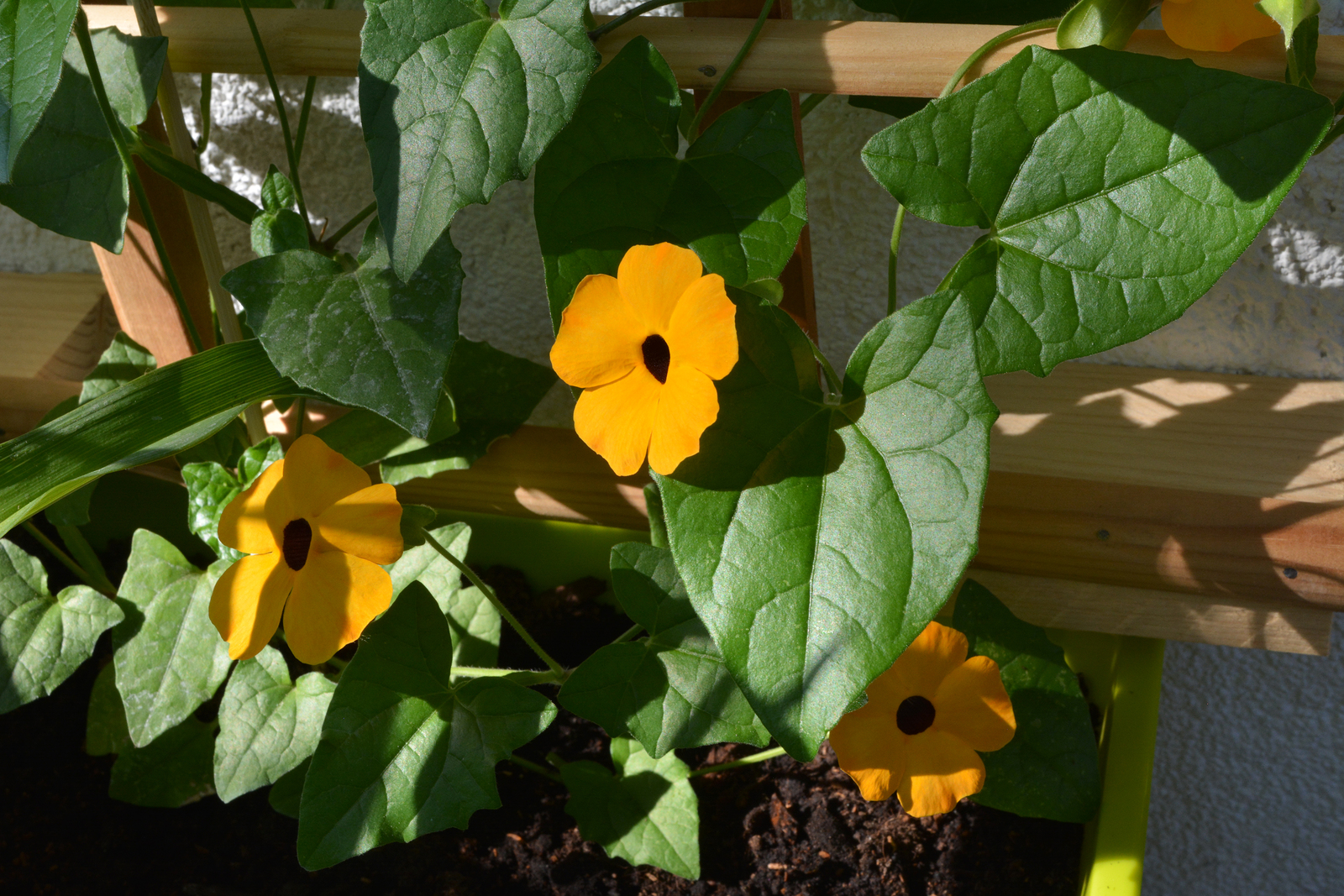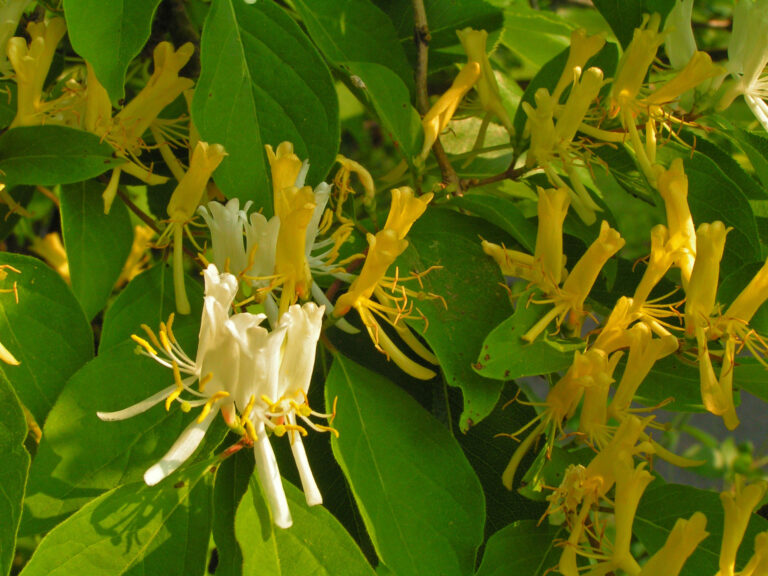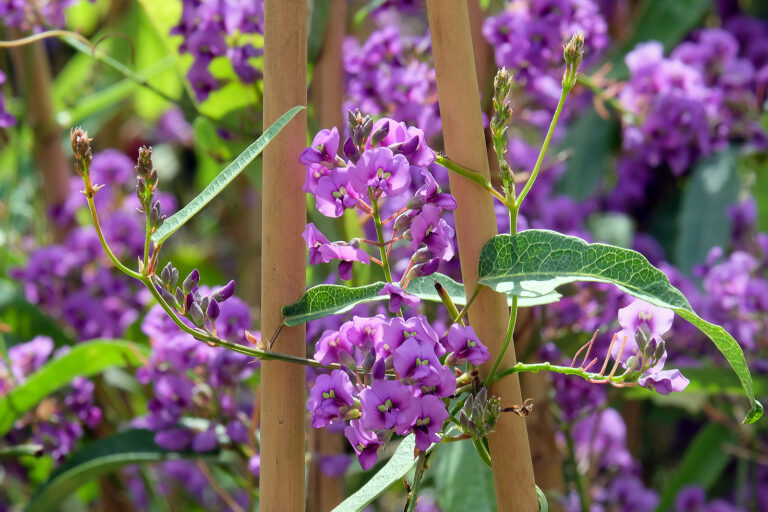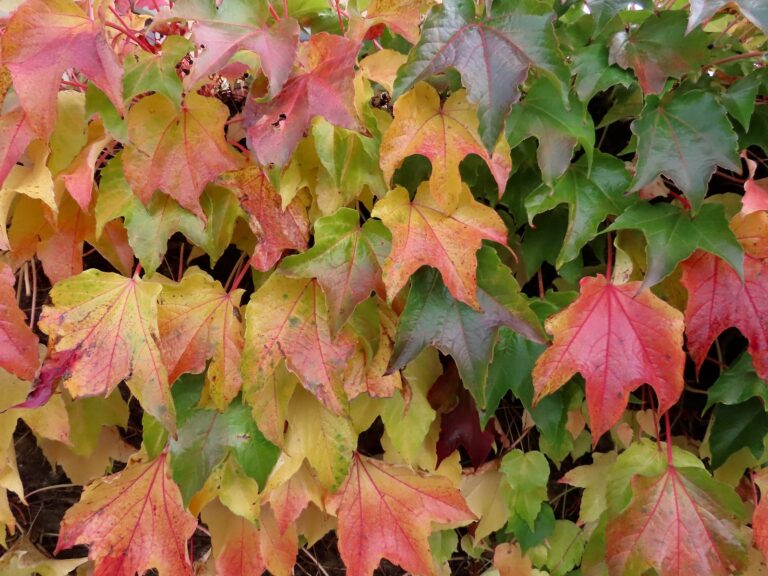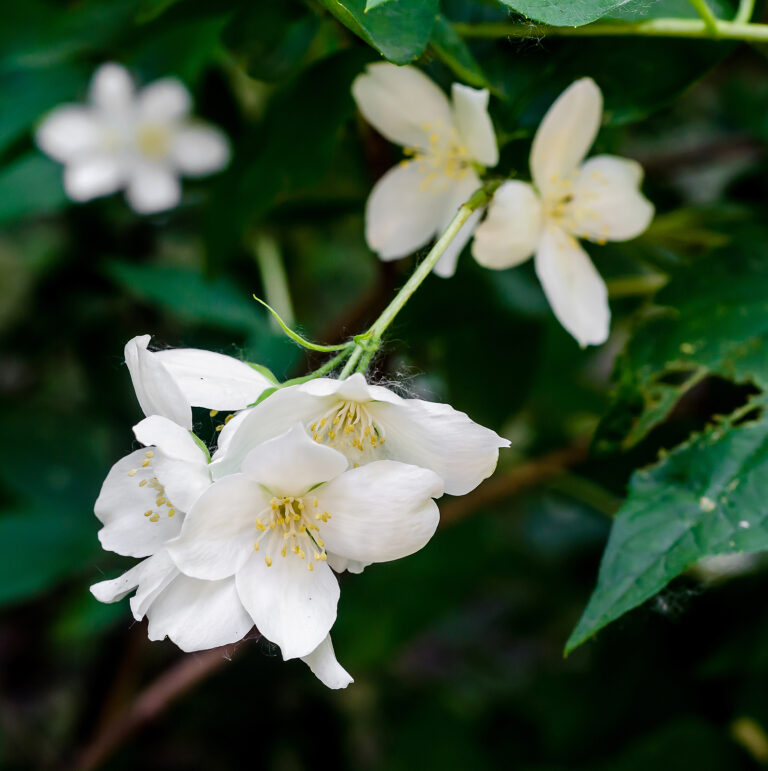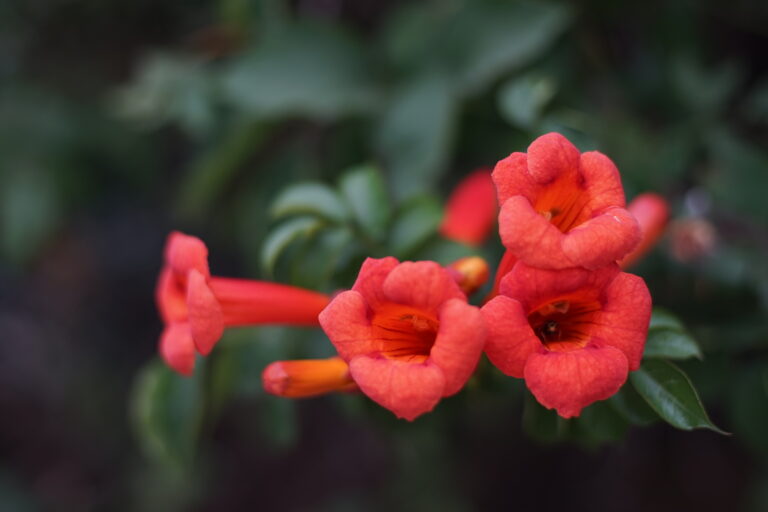How to Grow Thunbergia – Black-Eyed Susan Vine
Thunbergia–commonly called black-eyed Susan vine–is a perennial climber usually grown as an annual. Bright yellow to orange five-petaled flared tubular flowers with dark eyes grow above bright-green, triangular leaves.
Other vines among the Thunbergia genus are the orange clock vine and sky flower. Both are grown in the same manner as black-eyed Susan vine.
Thunbergias are perennials but they are commonly grown as annuals. In mild winter regions, some will bloom year-round.

Get to know Thunbergia
- Plant type: Tropical perennial vine grown as an annual
- Growing Zones and range: Zones 10-11 as a perennial; all zones as an annual
- Hardiness: Grow as an annual in Zones 2-9; grow as a perennial in Zones 10-11
- Height and width: 6 to 10 feet (1.8-3m) tall and wide
- Foliage: Triangular bright green leaves
- Flowers: Flaring tubular or tunnel-shaped flowers 1-inch in diameter
- Flower colors: Yellow, orange, or creamy white with dark centers
- Bloom time: Early summer until fall
- Uses: Covering trellises, lattice, small fences; use to trail over the sides of hanging baskets and other containers
- Common name: Black-Eyed Susan Vine
- Botanical name: Thunbergia alata
- Family: Acanthaceae
- Origin: Southern Africa
Where to plant Thunbergia
- Plant Thunbergia in full sun. In hot summer regions, plant in a spot that receives partial shade in the afternoon.
- Grow Thunbergia in humus-rich, well-drained soil.
- Thunbergia prefers a soil pH of 6.8 to 7.7.
Thunbergia uses
- Thunbergia is decorative on fences and trellises.
- Dwarf forms are attractive trailing from hanging baskets and window boxes.

When to plant Thunbergia
- Set established seedlings or sow seeds directly in the soil in late winter or spring after all danger of frost has passed.
- Sow Thunbergia seeds indoors 6 to 8 weeks before the last frost in spring. Sow seed at 60° to 70°F ( 15.6°-21°C).
- Germination takes 14 to 21 days.
Planting and spacing Thunbergia
- Sow Thunbergia seed 1/8 to 1/4 inch deep in sterile potting mix or evenly prepared garden soil.
- Space Thunbergia 6 to 10 feet (1.8-3m) apart.
How to water and feed Thunbergia
- Thunbergia needs ample moisture; keep the soil evenly moist.
- Fertilize Thunbergia with a slow-release fertilizer in spring.
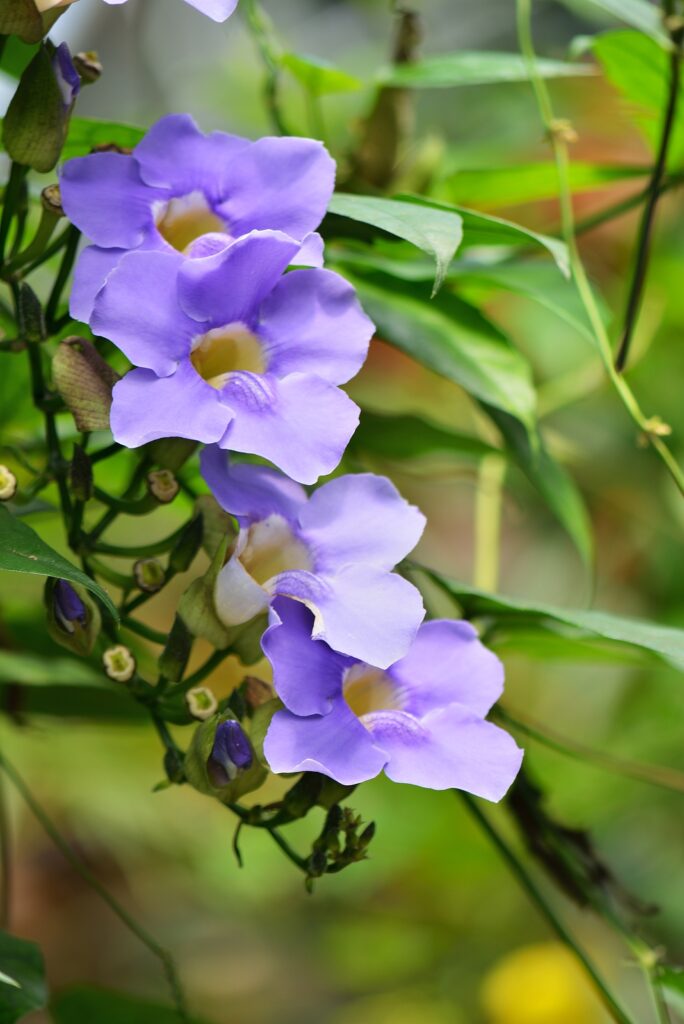
Thunbergia care
- Mulch around Thunbergia to conserve soil moisture.
- Once they are about 1-inch high, thin plants to at least 12 inches apart.
- Vines climb by twining; support can include trellises, string-trellises, teepees, lattice, chain link fencing.
- In Zones 2-9, remove plants after frost or when it gets ragged in early winter. In Zones 10-11, frost will kill to the ground, but plants will reemerge.
- Vines are very sensitive to frost; protect roots with mulch.
- Over-wintered plants are more vigorous than first-year plants.
- Prune in spring before new growth begins.
Growing Thunbergia as a houseplant
- Thunbergia alata can be grown as a houseplant.
- Grow Thunbergia in a room where the temperature is average to warm, light is direct and humidity is average.
- The growing medium should be soilless and well-drained; keep the soil constantly moist when the plant is flowering. At other times, let the medium dry out slightly between waterings.
- Fertilize thunbergia every two weeks during spring and summer.
- For vines, provide a trellis or other support, or let plants cascade out of hanging baskets.
Thunbergia pests and diseases
- Mealybugs and scale insects can attack Thunbergia.
Thunbergia propagation
- Sow Thunbergia seed in spring.
- Seed germinate in 14 to 21 days at 70° to 75°F (21°-24°C).
- Take cuttings in summer. Use cutting to propagate and overwinter plants for setting in the garden the following spring.
- Thunbergia can be propagated by layering.
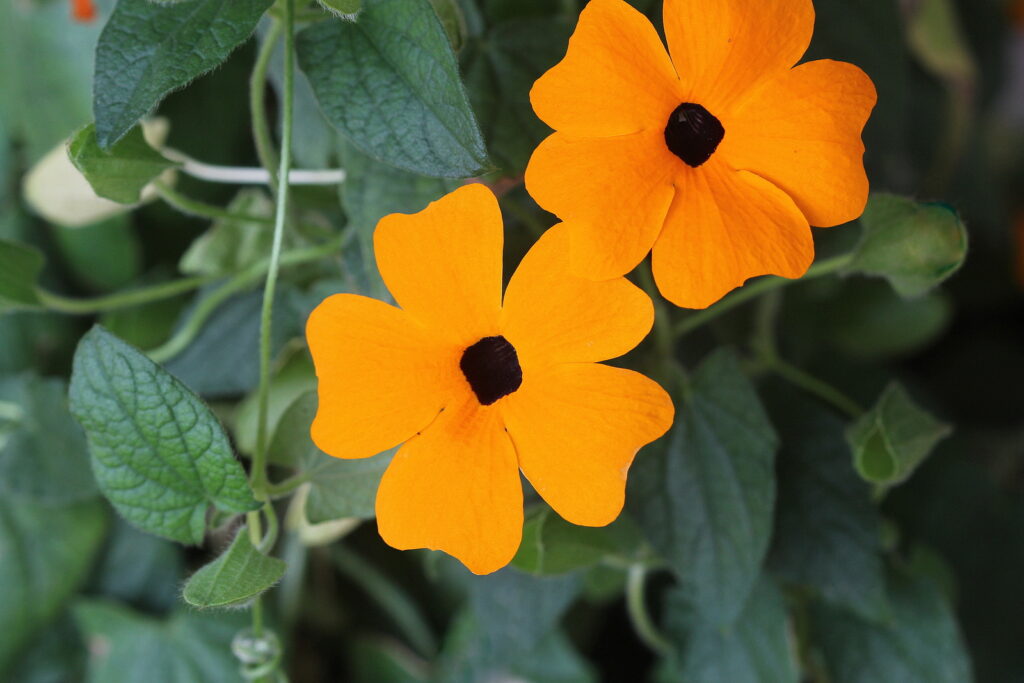
Thunbergia varieties to grow
- Thunbergia alata, black-eyed Susan vine: Perennial vine is grown as summer annual; small trailing, twining vine with triangular leaves; flowers are flaring tubes to 1 inch wide in orange, yellow, or white, all with a purple-black throat. ‘Susie’ series is the most popular; flowers are yellow, orange, and cream with dark centers. ‘Alba’ has white flowers wiht dark centers. ‘Aurantica’ has orange-yellow flowers with dark centers. ‘Bakeri’ has pure white flowers.
- T. erecta, King’s mantle: Evergreen shrubs to 6 feet tall, erect, sometimes twining; dark green leaves; dark blue flowers with orange or cream throats in summer and fall.
- T. grandiflora, sky flower: Perennial vine grows to 20 feet; heart-shaped leaves; slightly drooping tubular flowers 3-inches across in pure blue; blooms summer to fall.
- T. gregorii, orange clock vine: Perennial grows to 6 feet tall; toothed 3-inch leaves; flaring tubular bright orange flower; blooms nearly all year in mild regions, in summer where winters are cold; can be grown as ground cover.
- T. mysorensis: Perennial one with hanging clusters of red and yellow flowers; blooms in summer; train to a pergola for the best display of flowers.

